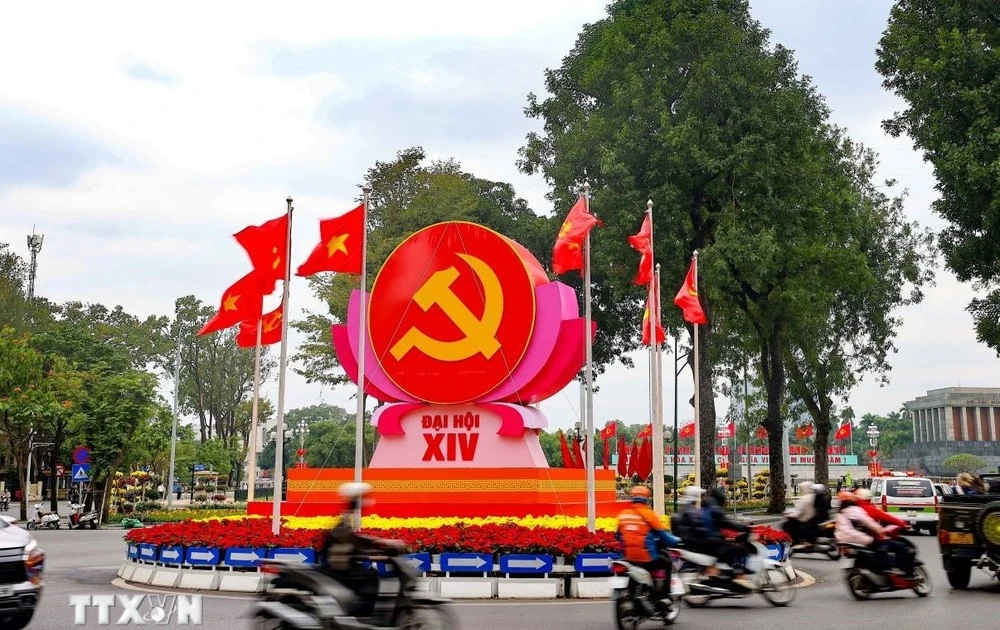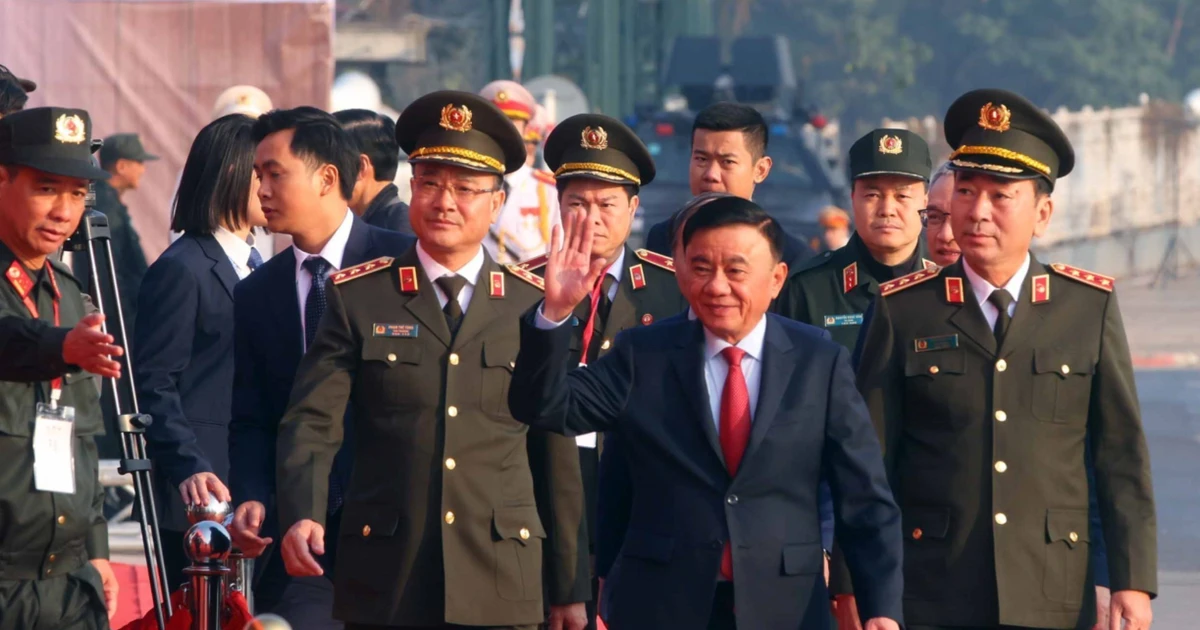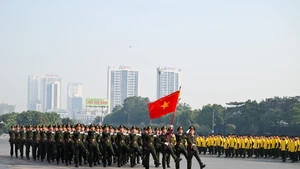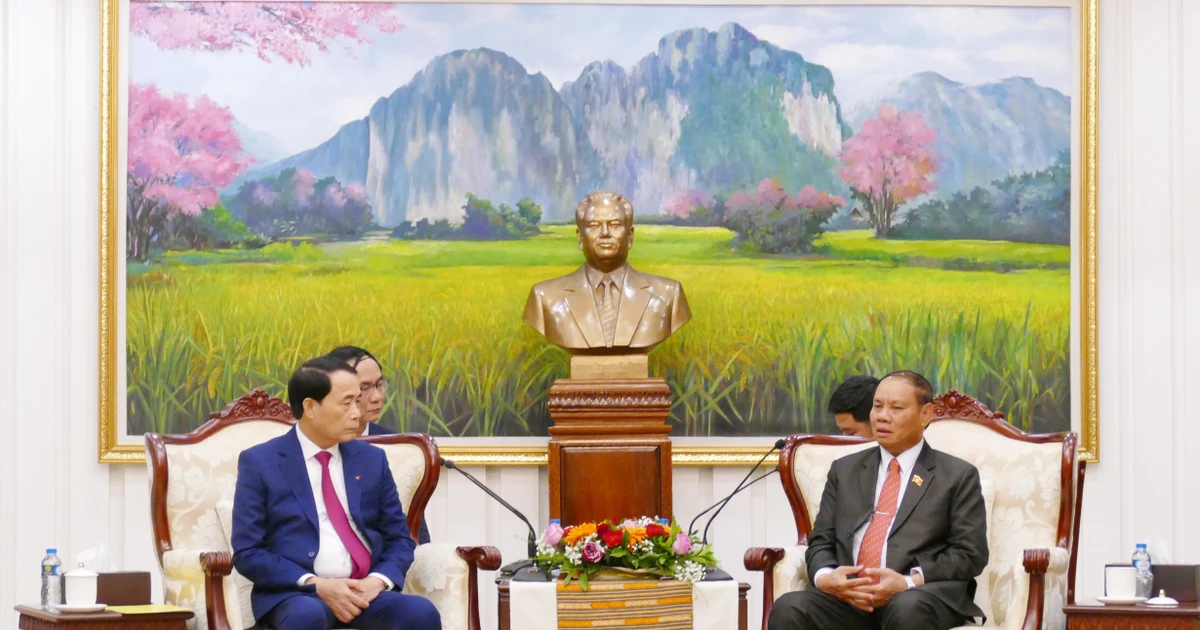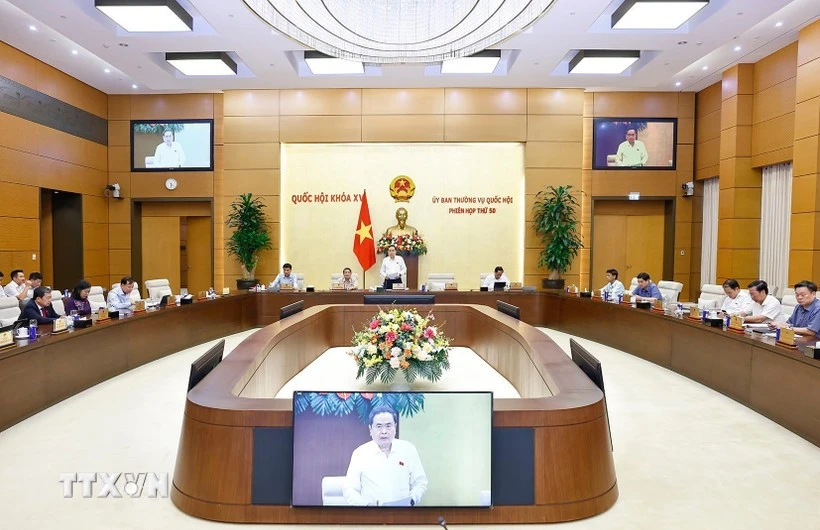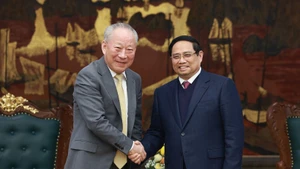Today, 70 years have passed, but on A1 hill there are still rows of barbed wire, fortification trenches, truncated banyan tree blockhouses, and intact blast holes that are traces of thousand-pound explosions.
Next to the small road on top of hill A1, every year around the end of April and throughout May, two Royal poinciana trees bloom brilliantly, filling the sky as if recounting the summer days of 70 years ago when many people soldiers fought bravely in this place. It was in that place that these soldiers’ blood once stained every meter of this land...
Coming with his companions to find their comrades, visit their comrades at the A1, Doc Lap, and Him Lam martyrs' cemeteries, then going to find the remains of soldiers on the hills of A1 and Him Lam, soldier Truong Sy Tri from to Regiment 174, Group 316, could not hold back his tears.
Pointing to the barbed wire fence and trenches on hill A1, Tri emotionally shared about the arduous days of fighting. His voice seemed lost, Tri softly said: “At this same time 70 years ago, the battle was in a difficult and fierce period. My unit was assigned to dig trenches on hill A1, this is the most important base in the eastern defence system of Muong Thanh together with C1, C2, D, E to form a solid wall” as a “key door” protecting the centre of the French stronghold in Muong Thanh.
In addition, A1 is the last high point in the south of the eastern area, near the road to General de Castries' Command Post, so if Vietnamese troops captured A1, the bases C1 and C2 would be strongly threatened, and at the same time prevented the French army from moving from the centre to counterattack, creating conditions for Vietnamese troops to deploy and approach as a springboard for development into the centre.
To capture Hill A1, Vietnamese soldiers attacked the French army twice from the night of March 30 to noon of April 1, 1954, and captured half of Hill A1. From the night of April 1 to the morning of April 3, Vietnam continued to approach and fight, destroying a lot of the enemy's vitality.
At 3:00 p.m. the same day, France organised a second counterattack, using additional artillery and two bomber planes, but with heroic fighting spirit and cunning, the soldiers of Regiment 102 (Army 308) and Regiment 174 (Army 316) concentrated its destructive fire, stopped the counterattack, burned a tank, and forced the French to retreat.
Preparing to continue to attack base A1, Group 316 was assigned to organise and dig three trenches, but the problem of finding a way to attack underground tunnels was a difficult question to solve.
After many plans were discussed, in the end, the plan to coordinate with the engineering force to dig a tunnel from the battlefield to the foot of the enemy's tunnel and then use about 1,000kg of explosives to collapse the tunnel was approved by the Campaign command.
Digging trenches was inherently hard, but digging trenches on hill A1 was even more difficult because the enemy arranged dense defences there, the soil and rocks on the hills were extremely hard, and trench digging was only carried out at night, so there were no words to describe it, but no one bothered, no one complained even once.
“Every night, before going to dig trenches, we told each other to put all our strength into the tip of the shovel to dig out the soil, not to make a sound, not to get caught in enemy mines or barbed wire to ensure secrecy. Even though we were careful, we could not avoid injury and loss, because every now and then the enemy fired artillery shells to find targets around many of my comrades' trenches and bunkers people were lying on the hill...” said Tri as he choked in sobs when talking about his comrades lying on the battlefield.
With the determination and fighting will of the “Uncle Ho’s soldiers”, the tunnel where the explosive block was placed was finally completed. At exactly 8:30 p.m. on May 6, 1954, the explosion of nearly 1,000 kg of explosives on Hill A1 rang out, carrying most of the 2nd parachute company of the French army.
The battle with submachine guns, grenades, and bayonets took place on every meter of every trench and every gun emplacement. With a tenacious and courageous fighting spirit, Vietnamese soldiers took complete control of base A1 at 4:00 a.m. on May 7, 1954, opening the steel door straight into the heart of the Dien Bien Phu base group.
In the battle on Hill A1, the enemy was completely defeated but Vietnamese soldiers suffered no small casualties, but what prevailed was the determined fighting spirit of Dien Bien soldiers. To win, to support their teammates, there were soldiers ready to rush into the gun emplacement to open the way for the unit to attack.
With Tri and a group of Dien Bien soldiers visiting Hill A1 on the afternoon of a recent April day, I saw eyes filled with tears of sympathy, and veterans walking slowly as if they didn't want to leave.
Looking at the rows of green trees and peanut grass covering the hillsides, the veterans and soldiers of Dien Bien in the past also felt somewhat more satisfied with the understanding that “their comrades who sacrificed behind could sleep peacefully on the soft grass.”
Today, every day and every hour, in every square of land on the A1 hill campus — the red-hot battlefield of the past — there are now hands nurturing every row of trees and grass with a heart of deep gratitude and appreciation.
Pham Thi Thao, Deputy Director of the Dien Bien Provincial Monuments Management Board, confided: “What we can do today is showing our hope and gratitude so that the fallen soldiers could rest in peace and did not feel alone.”
Unexpectedly, the pair of words “alone” reminded me of the number of nearly 50,000 people who visited A1 recently. Most of the visitors were veterans, Dien Bien soldiers, young volunteers, and frontline workers from all over country.
Everyone was surprised, everyone was reassured by the scene of A1 in the new day. In that place, there are still traces of the “death battle” that once took place for the Fatherland to live.
Today, A1 has become a place to welcome people back with crimson colours of flowers, like the majestic words “A1 - MUD, BLOOD AND FLOWERS” on the top of the hill that the young generation of Dien Bien decorates and takes care of every day!




